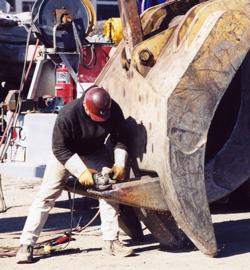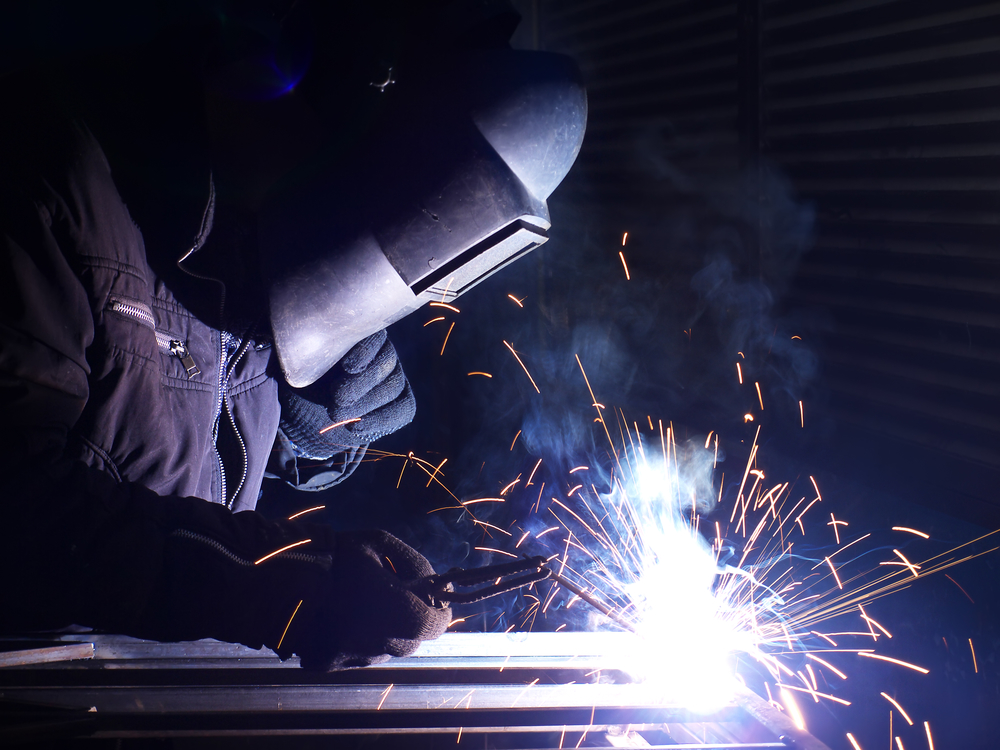Usual Welding Repair Issues and Just How to Address Them Efficiently
Welding repair work frequently encounter a variety of problems that can jeopardize the stability of the end product. Usual troubles consist of poor penetration, porosity, and imbalance, among others. Each problem presents special challenges that call for specific techniques for resolution. Recognizing these concerns is necessary for welders aiming to improve their skills and outcomes. This discussion will certainly explore these typical welding fixing concerns and effective techniques to resolve them.
Insufficient Penetration
Insufficient infiltration happens when the weld steel falls short to fully fuse with the base product, causing weak joints and possible structural failures. This problem usually originates from not enough warmth input, wrong electrode angle, or inappropriate welding speed. Welders might experience poor penetration as a result of a miscalculation of the essential criteria for a particular product density or type. Furthermore, contamination on the base product's surface area can impede effective bonding, exacerbating the problem. To deal with poor infiltration, welders should guarantee ideal settings on their tools and keep a clean work surface. Regular examination of welds is suggested to recognize any deficiencies early, permitting for prompt corrections and the avoidance of compromised structural honesty in bonded settings up.
Porosity
Porosity is a typical flaw in bonded joints that materializes as tiny gas bubbles caught within the weld metal. This issue can jeopardize the honesty of the weld, causing reduced stamina and prospective failing under stress and anxiety. Montana Mobile Welding and Repair Belgrade Fabrication. Porosity typically arises from contamination, wetness, or improper welding methods, which permit gases to get away right into the liquified weld pool. To attend to porosity, welders need to assure proper surface prep work, maintain a clean workplace, and utilize ideal welding parameters. In addition, choosing the appropriate filler material and shielding gas can minimize gas entrapment. Normal evaluation and testing of welds can aid identify porosity early, ensuring timely rehabilitative activities are taken, consequently maintaining the quality and reliability of the bonded structure
Imbalance
Imbalance in welding can develop from various variables, consisting of incorrect arrangement and thermal development. Understanding the source is essential for effective resolution. Several modification techniques are readily available to straighten parts and ensure architectural integrity.
Reasons for Imbalance
Welding misalignment usually comes from a variety of underlying problems that can endanger architectural stability. One key reason is inappropriate fit-up of elements prior to welding, which can bring about voids and unequal surfaces. Variations in thermal development throughout the welding process can likewise lead to distortion, specifically if the products being signed up with have various coefficients of expansion. In addition, insufficient clamping and fixturing may fail to hold parts firmly in position, resulting in activity during welding. Poorly maintained equipment, consisting of welding machines and tools, may introduce incongruities in the weld bead, further contributing to misalignment. Operator error, stemming from inadequate training or experience, can additionally play a considerable duty in developing misaligned welds.

Modification Techniques Readily Available
Addressing imbalance successfully needs a mix of corrective methods customized to the specific problems at hand. One common approach is using fixtures or jigs to hold elements in the right placement during welding, guaranteeing constant positioning. Furthermore, pre-heating the materials can help decrease distortion and improve fit-up. For considerable imbalance, mechanical realignment methods, such as making use of hydraulic jacks or clamps, can be employed to correct the setting before welding. Post-weld warm therapy may also be necessary to alleviate anxieties brought on by imbalance. Lastly, mindful inspection and modification during the configuration stage can avoid imbalance issues from coming to be substantial problems, promoting a smoother welding process and boosting total structural integrity.
Distortion
Distortion is a typical difficulty in welding that can occur from numerous elements, consisting of uneven heating & cooling. Understanding the reasons of distortion is crucial for implementing effective prevention techniques. Resolving this concern not just enhances architectural stability yet likewise improves the overall top quality of the weld.
Root causes of Distortion
When subjected to the intense warm of welding, products typically undergo adjustments that can lead to distortion. This phenomenon mainly arises from thermal development and tightening during the welding procedure. As the weld area warms up, the material increases; upon cooling, it contracts, which can create inner tensions. In addition, uneven home heating across a workpiece can aggravate these anxieties, resulting in bending or flexing. The kind of product also plays a significant role; steels with differing thermal conductivity and coefficients of growth might react differently, resulting in uncertain distortions. Moreover, bad joint layout and poor fixturing can add to imbalance throughout welding, boosting the possibility of distortion. Comprehending these causes is necessary for reliable welding fixing and avoidance methods.
Prevention Techniques
Reliable prevention techniques for distortion throughout welding concentrate on regulating warmth input and guaranteeing correct joint design. Maintaining a regular heat input helps to reduce thermal expansion and tightening, which can lead to distortion. Making use of techniques such as pre-heating the workpiece can also lower the temperature gradient, advertising uniform home heating. Furthermore, picking ideal joint styles, such as T-joints or lap joints, can improve stability and minimize stress and anxiety concentrations. Executing appropriate fixturing to secure the work surfaces in place further aids in maintaining positioning throughout the welding procedure. Finally, staggered welding series can disperse warmth much more evenly, stopping localized distortion. By using these techniques, welders can greatly lower the probability of distortion and enhance the general quality of their welds.
Fracturing
Splitting is a typical issue experienced in welding fixings, often arising from different aspects such as improper cooling rates, material option, or insufficient joint preparation. The incident of fractures can substantially endanger the integrity of the weld, resulting in possible failings throughout operation. To address this concern, welders must initially assess the source, ensuring that materials work and appropriately chosen for the particular application. In addition, managing the cooling price throughout the welding process is important; rapid cooling can generate anxiety and cause cracking. Correct joint style and prep work additionally add to lessening the danger. Carrying out these approaches can enhance weld top quality and durability, ultimately lowering the likelihood of splitting in finished weldments.

Insufficient Fusion
A substantial issue in welding repair work is insufficient blend, which happens when the weld metal does not sufficiently bond with the base product or previous weld passes - Montana Mobile Welding and Repair. This issue site can cause weak points in the joint, possibly endangering the stability of the welded structure. Aspects adding to incomplete blend consist of insufficient warmth input, inappropriate welding strategy, and contamination of the surfaces being joined. To address this problem properly, welders ought to ensure proper pre-weld cleansing and surface prep work, in addition to change their welding parameters to accomplish adequate penetration and fusion. Normal evaluation throughout the welding procedure can additionally aid identify insufficient fusion early, enabling prompt corrective measures to improve the overall high quality of the weld
Overheating
While welding repair services can improve structural stability, overheating offers a significant obstacle that can bring about material deterioration. Too much heat throughout welding can alter the mechanical residential or commercial properties of metals, causing decreased stamina, boosted brittleness, and warping. This phenomenon is particularly crucial in high-stress applications where architectural integrity is paramount. Identifying overheating can entail aesthetic assessments for discoloration or distortion, along with keeping track of temperature during the welding procedure. To minimize the dangers related to overheating, welders should use ideal strategies, such as regulating heat input, readjusting traveling speed, and using appropriate filler products. Furthermore, carrying out pre- and post-weld warm therapies can help restore material buildings and boost the general quality of the repair service, making certain lasting performance and safety and security.
Often Asked Inquiries
What Are the Common Indications of a Welding Issue?

Exactly How Can I Check My Welds for High quality?
To test welds for top quality, one can use visual evaluations, ultrasonic testing, and radiographic techniques. Each strategy assures architectural integrity, identifies problems, and validates adherence to specified standards, inevitably boosting the dependability of the bonded joints.
What Safety and security Preventative Measures Should I Take While Welding?
When welding, one need to prioritize safety and security by wearing ideal individual safety tools, making sure appropriate ventilation, protecting combustible materials away, preserving a tidy work area, and recognizing environments to top article avoid mishaps and injuries.
Can I Fix a Weld Without Redoing the Entire Joint?
Fixing a weld without remodeling the entire joint is feasible, relying on the damage (Belgrade Welding). Strategies such as grinding, including filler material, or using a welding procedure can successfully resolve specific flaws while protecting the bordering structure
What Equipment Are Important for Efficient Welding Services?
Necessary devices for efficient welding fixings include a welding equipment, wire brush, grinder, safety gear, clamps, and filler materials. Each tool plays an important function in ensuring quality and safety during the repair service process. Porosity typically arises from contamination, dampness, or incorrect welding methods, which allow gases to leave into the molten weld pool. Improperly maintained devices, consisting of welding devices and tools, may introduce variances in the weld grain, additional contributing to imbalance. When subjected to the extreme heat of welding, materials frequently go through changes that can lead to distortion. Cracking is an usual concern run into in welding repair services, frequently resulting from numerous elements such as incorrect air conditioning rates, product selection, or insufficient joint preparation. A substantial concern in welding repair work is incomplete combination, which occurs when the weld steel does not properly clarke welder bond with the base product or previous weld passes.